It’s never to early to learn, and we’ve compiled a list of 21 ways to prepare your preschooler for handwriting success.
I have a confession. We failed at preparing our oldest son for handwriting success. He wasn’t interested in coloring. He wasn’t interested in cutting. He just wanted to romp and run and be a little rambunctious boy.
No doubt, those things are important!
But when it came time for handwriting, he struggled. He still struggles with neatness in handwriting. In retrospect, my wife wishes she knew what she does now. She wishes she would have spent more time encouraging activities that strengthen fine motor skills (while still having fun of course).
The difference in our first-born and second-born was crazy. Writing came naturally to our second-born who loves coloring, painting, playdough, and crafts. There is no doubt in our minds that many of these activities helped him develop fine motor skills and in turn get him ready for handwriting.
Seeing these differences, and doing the research, has given us the know-how to prepare our 3-year old twins. I put together a list of 21 things that can be done to help prepare your preschooler for handwriting success.
Why Fine Motor Skills Are Vital
Prepare your Preschooler for Handwriting: Tips Before You Get Started
When your child is 3 or 4, you might start noticing that one hand is their dominant hand: they just prefer using it to eat or color. Keep in mind a child’s dominant hand might not be firmly established until they are 6 or 7, so as you observe your child, pay attention to the hand they favor. This will help you transition into handwriting later on.
As another note for parents of boys: you might need to spend a little extra time with your boys. One large scale study done in the UK found that generally there are no differences between kindergarten-age boys and girls in the development of gross motor skills, but girls do perform better with fine motor skills. Boys may just need more time developing the skills they need, so be patient with them.
21 Activities to Develop Strong Fine-Motor Skills and Prepare your Preschooler for Handwriting:
1. Self help activities. By age 4 most kids are doing a decent job with getting dressed, except for needing help with tying shoes or putting on jackets and coats. These are great fine motor activities kids can learn when they are in preschool:
- using a zipper
- buttoning a snap
- tying a shoes
These things do take practice and can be frustrating to kids, so instead of pushing them, just continue to show them how and don’t get frustrated yourself.
2. Drawing, Tracing, and Painting. This is an obvious way to build fine motor skills. You can put out the crayons and markers and let your kids go to town. But it is good to help them develop some techniques.
- Have your child copy you. Draw different shapes and ask your child to copy you.
- Draw specific pictures. Challenge your child to draw a picture of something specific they can look at.
- Have your child do some tracing: have them trace over dotted or dashed lines to make a picture. Tracing requires a strong and controlled grip, so its great for developing fine motor skills.
- Painting. Have your child do some painting with a paintbrush or a Q-Tip, or, of course, fingerpainting. What child doesn’t love getting paint all over themselves?
- Color in the lines. Have them practice coloring in the lines, which takes more control than just scribbling the whole page!
3. Cutting. Cutting is a very effective way to strengthen a child’s hand. Find some child safe scissors and have them cut specific objects: cut along a straight line, cut along a curved line, cutting out shapes. Just remember, learning to cut is a long process.
Make it fun by showing your child how to make paper dolls or snowflakes!
4. Gluing. Once you’ve cut out shapes, gluing is another great activity for developing fine motor skills.
- Use construction paper or colored paper and have your child make fun designs.
- You can also use glue for thicker objects, like gluing dried beans to paper and making the outline of a shape or an animal.
5. Wikki Stix. Wikki Stix are made of yarn covered in wax, so they both bend and stick to stuff. You can get some printable shapes, laminate them (this laminator is a must-have for every mom) and then give your child Wikki Stix to bend stick to the laminated pages. This is a great way to exercise the pincher fingers.
This post has more fun ideas on how to use Wikki Stix for early learning.
6. Stacking blocks. By the age of 4 your child should have the ability to stack up a tower of blocks, but you can have your child practice all kinds of other shapes like building something with four walls or putting them in a circle or making a pyramid. This practices hand-eye coordination and dexterity.
7. Linking blocks or connector sets. Let your kids play with Megablocks or Duplos. By age 4 they can probably build some simple stuff already, so consider helping them build something more complicated or buy different kinds of blocks like magnetic blocks, bristle blocks, Tinker Toys, construction straws (one of our little boys favorites), or Unifix cubes.
8. Puzzles. Puzzles are great for cognitive development in general because children are manipulating objects, practicing problem solving, learning to recognize shapes, and enhancing their memory. Of course, it’s also great fine motor play!
9. Fun with food. The action of using a spoon or fork correctly is a great fine motor skill. When eating meals, show your child how you hold you utensil and then place their fingers in the right position.
By age 4 your kids are likely holding the utensil the right way, but you can introduce new food skills. For instance, let them butter their own bread with a butter knife, or use toothpicks for things like marshmallows, grapes, or berries. Kids will have to use both hands and coordinate their fingers to get the toothpicks in. They’ll love eating their finished product.
10. Playing with dough. You could use PlayDough or Theraputty. Theraputty is a strong silly-putty-like material that a lot of Occupational Therapists use. Theraputty comes in different strengths: each color of Theraputty has more or less resistance when you squeeze it.
If the toxicity or ingredients of dough are a concern to you, you can get a recipe for do-it-yourself gluten-free, non-toxic dough.
- Rolling dough with both hands is good for coordination as well as exercising the hand and wrist muscles.
- Squeezing dough is also great for building up strength of the fingers.
- Challenge your child to get creative. Your kids might already be playing with dough and making simple objects like: balls, snakes, or cookies. Challenge them to make other shapes to get more creative, things like a bird nest or a box.
- Make a game! Find objects like coins or shells or very small toys and hide them in the dough for your kids to find. Let them keep the prizes as a reward. This is something kids can do with other kids too: one kid hides the prize, another kid finds it.
- Make abstract art. Stick things on the dought to make abstract art or strange creatures. You can use all kinds of stuff for this like plastic googley eyes, straws, feathers, sticks, shells, buttons, glass pebbles, wooden letters or numbers, match sticks, pipe cleaners. Whatever you want.
You may want to consider adding this set of 88 printable fun pages to your collection.
- 26 Wikki Stix Mats
- 26 Play Dough Mats
- 26 Color-Your-Own Alphabet Cards
- 10 Tracing Pages
11. Computers. Using a mouse and keyboard helps to develop eye-hand coordination. With touchscreen technology, there are some great apps that can help develop this coordination and some fine motor skills.
Keep in mind, however, not to overdo it when it comes to technology. There’s only so much a screen can do, so rely mostly on real objects.
12. Sorting. Sorting activities are great for recognizing shapes, colors, textures, and development of fine motor skills. Your child can sort candy, pebbles, or buttons. Many kids love doing this and it enables them to practice a pincer grip: using their thumb and index finger to get small objects.
13. Beads. You can purchase very low-cost beads of different sizes. Have your kids string the beads on pipecleaners. As your child gets comfortable with the larger beads, move to the smaller ones. This will really train your child’s fingers.
Eventually move your child away from pipe cleaners to a shoelace or a string of yarn. This is harder because your child has to have a steadier non-dominant hand. If you don’t want to buy beads, you can use macaroni or rigatoni noodles. Make it fun by having your child make necklaces for their friends.
14. Anything that pinches. Get some clothespins or tongs or tweezers: something where you child has to use his pincher fingers. Have them pick up small objects and put them into bowls or cups. Make sure you choose stuff to start that is easier to pick up, like cotton balls or pieces of fabric. Then move to smaller stuff, like picking up dry beans with tweezers.
A great way to teach kids about the pincer fingers is to draw three dots on a clothespin: two on one side, one on the other. It shows them where to put their fingers and thumb.
15. Nuts and bolts. Grab some cheap nuts and bolts from the hardware store. Purchase sets of different sizes so your child can match which ones fit together. The action of screwing the nut on is great practice of their pincer fingers.
16. Lacing boards, toys, or cards. You can also very easily make (or buy) sewing and lacing cards: just trace and cut out cardboard shapes or animals and then use a hole puncher to make a bunch of holds around the edges. Then have your child use yarn to go up and down through the holes until the entire edge is laced.
17. Sponges and Eye Droppers. Set up two bowls, one filled with water and the other bowl empty. Give your child a sponge and have him soak it in the first bowl and then ring it out into the other bowl. He can transfer water back and forth between bowls.
For more practice of the pincer fingers, give your child an eye dropper and have them move the water back and forth. Make this really fun and use bubbles or food dye!
18. Squirt bottles or squirt guns. This is a no-fail fun option. The action of pulling the trigger is great to strengthen the index finger. For an extra educational bent, have them write letters or shapes on the ground or a fence.
19. Stickers. I don’t know any little kid that doesn’t like stickers. The action of taking stickers off their backing and placing them on something else is great practice with pincer fingers.
20. Musical instruments. Playing around with an instrument can be great practice for the fingers. Researchers have found that children with instrumental music training outperform other children on fine motor skills, as well as on vocabulary and nonverbal reasoning.
For kids under 6, the piano, the recorder, and the violin are nice instruments because they provide a good foundation for further musical study later on. Just keep in mind that small hands come with limitations.
21. Find a good handwriting curriculum for your preschooler or Kindergartener. Find something that will put those fine motor skills to good use. Find something that will teach them letter formation and letter sounds, which will help prepare your preschooler for handwriting. Ideally, you want to save time during your homeschool day, so find a curriculum that is integrative with other subjects.
Try our curriculum for 4-6 year olds who need to learn their letters called Write Through the Bible, Jr. It is designed to help busy parents integrate several subjects into one:
- Fine motor coordination
- Letter sounds
- Letter formation
- Bible memory
- Biblical study
- Vocabulary
Each day includes instructions for the parent, Bible memory review, handwriting practice, and a fun activity sheet to continue to strengthen fine-motor skills. The books are available in spiral-bound or as a digital download.
Conclusion about How to Prepare Your Preschooler for Handwriting
I hope this list of 21 ways to prepare your preschooler for handwriting success inspires you for teaching your young children. There are so many ways you can start teaching your kids, even when they are quite young.
What other ways can you think of for helping to prepare a preschool child for handwriting success?
More Resources on Handwriting:
- Beginning Handwriting: Print or Cursive? What’s Best For Your Child?
- Helping Your Kids Know God’s Word: What’s Handwriting Got to Do With It?
- 13 Fun, Outdoor Activities to Develop Handwriting Skills
- 10 Reasons to Teach Your Children Handwriting in the Digital Age
- How to Teach Cursive Writing: Writing a Homeschool Guide

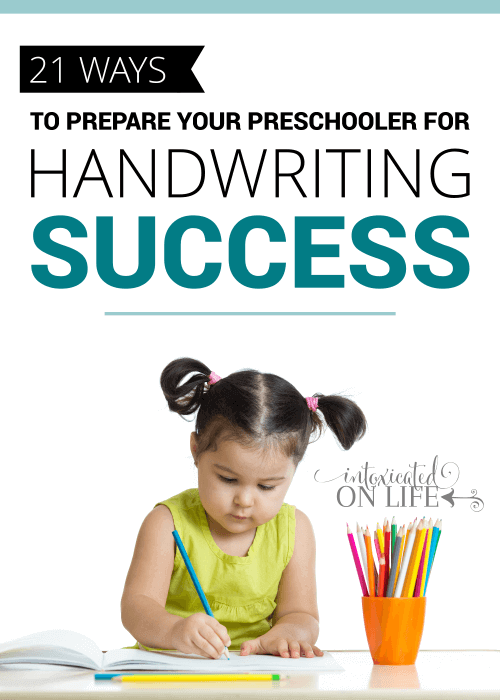
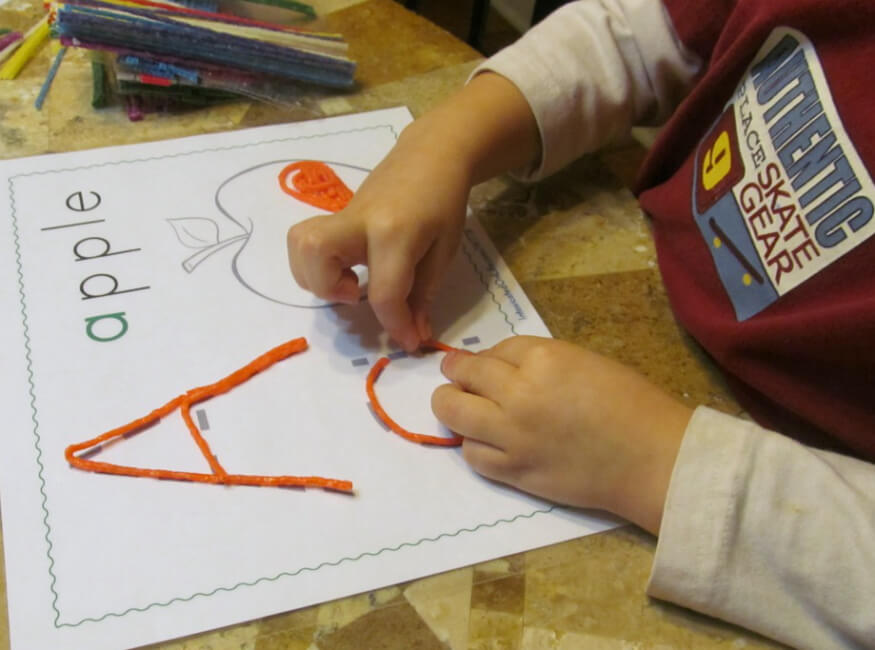
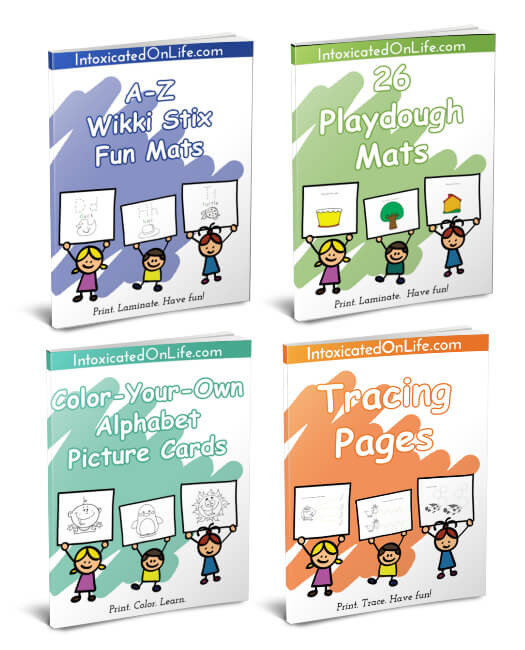
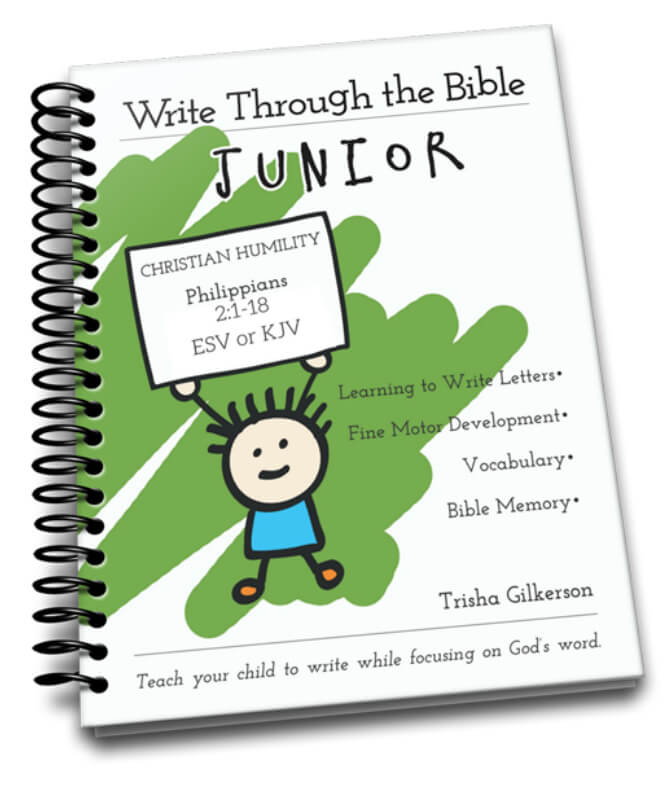
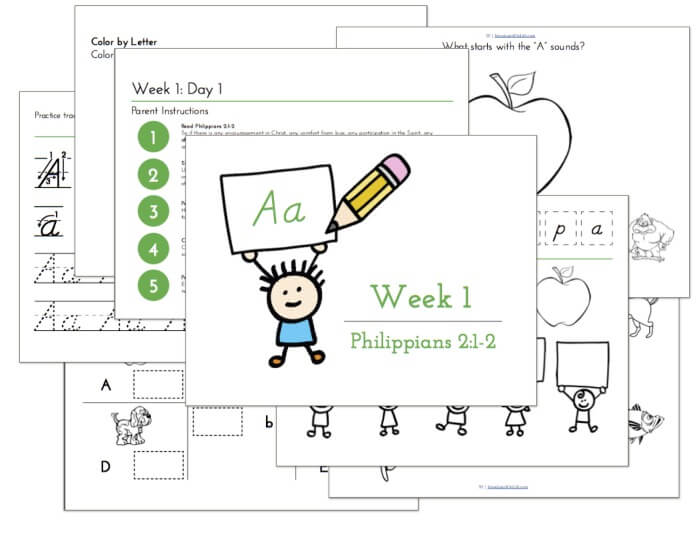
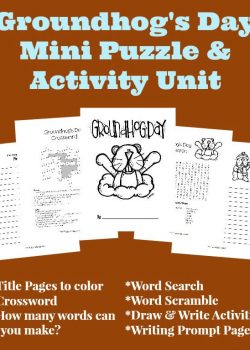



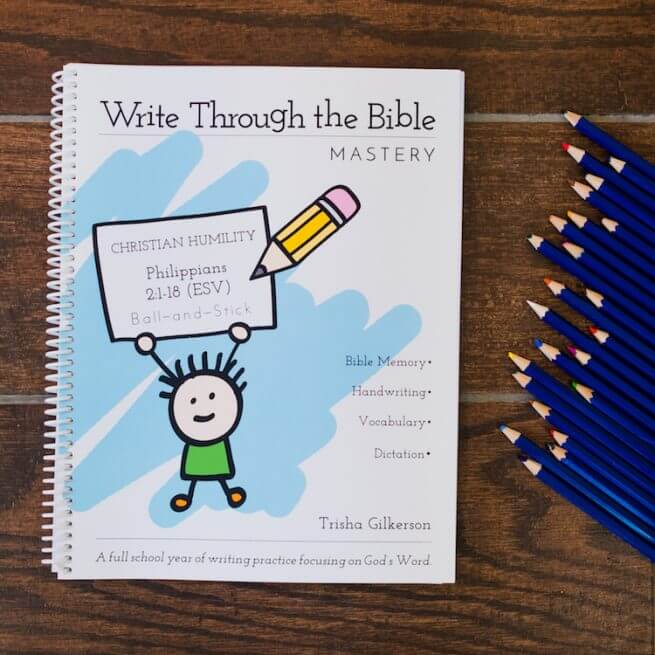
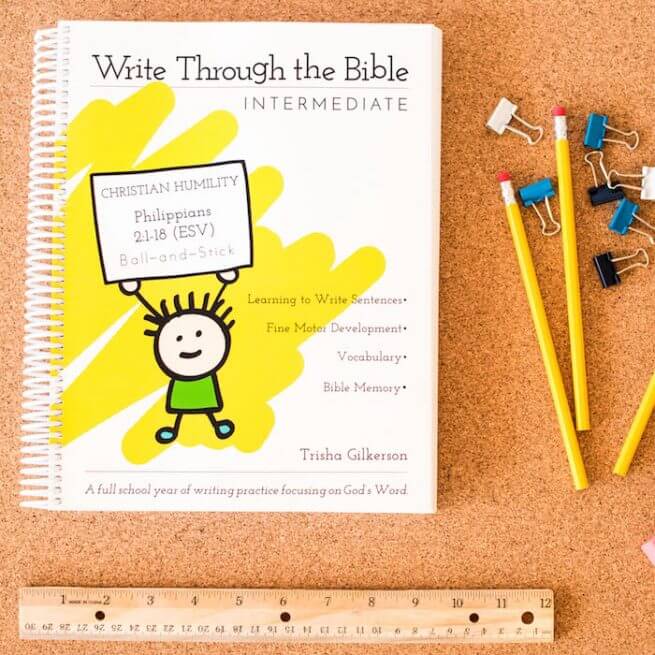
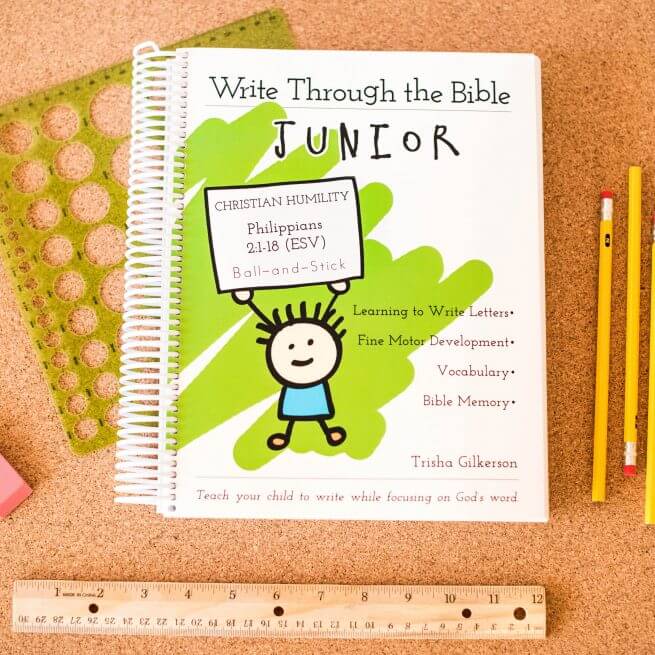


My oldest son wi be 4 in july. He does great with fine motor skills, his cutting and significantly improved since starting practice with it in August. He does well with tracing lines, curves, diagonals aND letters. his grasp of the pencil, however is not correct and he’s not always accepting of me trying to alter it or show him how to hold it. So how important is the correct grasp and when should I be worried about it or is it something that can correct itself with maturity andore writing practice?
Your son has time to modify his grasp of the pencil. Typically, by Kindergarten-age, they will have a more mature grasp. Our friend Heather has a great explanation of this on her blog.
Thank you so much. That is a great link!
My prek 5 year old daughter does a homemade handwriting journal each day. I preprinted a word for each day. She traces the dotted word, then writes it on her own, then draws a pic of it. Thanks for this printable. I am looking forward to downloading it today.
Wow! Great list, I definitely need to keep this in my back pocket. My son is two and this isn’t the first time I’ve heard that boys have a harder time with fine motor skills.
Another one to add to the list: Let your children peel their own oranges/ clementines. 🙂
Yes. I let my 3-year-old twins do that. They love it. (And they love eating the finished product, too.)
This is a fantastic list. My son is three and he hates fine motor activities. Every time we try to do clip cards with clothing pins, the clips turn into dinosaurs and he absolutely hates coloring. However since he is only three, I’m not panicking about it yet. Most kids aren’t ready for handwriting until at least five. Although, he is incredibly stubborn.
My oldest hated a lot of the fine motor activities as well. I wish I would have tried more activities with him though! Maybe try some more of these on the list? Maybe try some of the activities in the printable pack? I’ll bet you’ll find one or two activities he might enjoy :). Have you tried wikki stix? ALL of my kids love those!
My family lives in a wealthy area outside of NYC and my 4 year old currently attends a wonderful preschool (she will attend pre-k next year and start kindergarten fall of 2016). She is already attending school five mornings a week and this is an area where there is a lot of pressure put on the kids to perform well in academics. I would love to teach her at home to supplement but I am worried that I will be trying to do too much with her. She loves her time to play with her 2 year old brother in the afternoon and I don’t want to use that time, but at the moment we are not a homeschooling family. How much is too much? My son will be 3 in November and he will attend nursery school three mornings a week as well. Thoughts? Is there a way to tell if additional instruction at home is not in your child’s best interest? Should I wait until summer to start?
Hi Julie, I do think there is such a thing as over-doing it on the education with these little ones. Giving them plenty of time to romp around and play and use their imagination is very important! Many of the activities in our activity pack are play-based learning. For instance, the playdough mats and wikki stix mats are both great for encouraging a child to play with the medium in a more intentional way which helps them develop those fine motor skills. Most kids wouldn’t feel like it was “learning” though.
As for the Write Through the Bible, Junior program, I intentionally kept the program short. Little ones don’t have a long attention span and short lessons do much better than long lessons, in my experience. Each day consists of just 1 handwriting page, 1 activity page, and a parent page which directs parents on what verses to go over with for the day, vocabulary words, and a short Bible lesson each week.
Thank you for this amazing list. It is very helpful. God Bless
I followed all the steps and links or so I thought but I can’t find the 21 Ways to Prepare Your Preschooler for Handwriting Success printable. Can you send me a direct link? Thanks
Did you enter you e-mail address in the field at the end of the post?
I would like to print only the pages of text for the 21 ways to prepare………
Ho can we prrint just those couple pages????? Thank you!!!
You could copy and paste the text into a word document.
Aoa, these are really amazing ideas . I was shoked after reading these wonderful ideas. My son is five years old and he really taking no interest in writing and im so worried about him he is in prep now but no letter formation and neither write proper word . I only do give him alot of practice but no satisfactory result. Plz give me some suggestions
Where do I find the link to the 100+ pg. printable fine motor skills pack?
Is it the Lord’s Prayer workbook?
Great article! Thanks!
The printable fine motor skills pack is our Early Learning Bundle. It contains 4 different activity packs I’m sure you’ll love.